Toru Tamaki
Action tube generation by person query matching for spatio-temporal action detection
Mar 17, 2025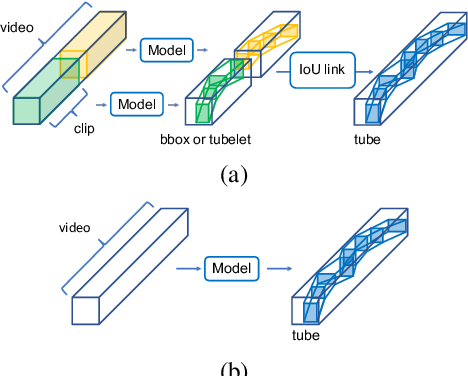

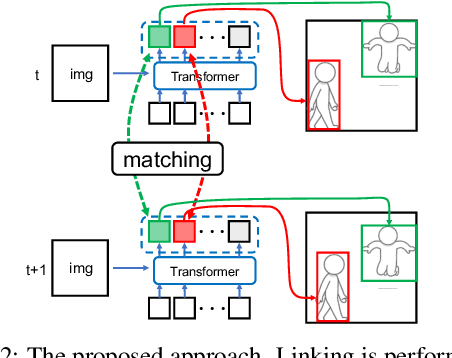
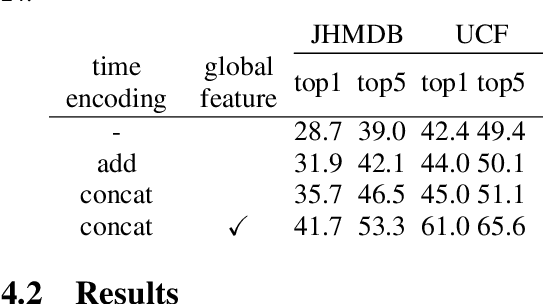
Abstract:This paper proposes a method for spatio-temporal action detection (STAD) that directly generates action tubes from the original video without relying on post-processing steps such as IoU-based linking and clip splitting. Our approach applies query-based detection (DETR) to each frame and matches DETR queries to link the same person across frames. We introduce the Query Matching Module (QMM), which uses metric learning to bring queries for the same person closer together across frames compared to queries for different people. Action classes are predicted using the sequence of queries obtained from QMM matching, allowing for variable-length inputs from videos longer than a single clip. Experimental results on JHMDB, UCF101-24, and AVA datasets demonstrate that our method performs well for large position changes of people while offering superior computational efficiency and lower resource requirements.
Shift and matching queries for video semantic segmentation
Oct 10, 2024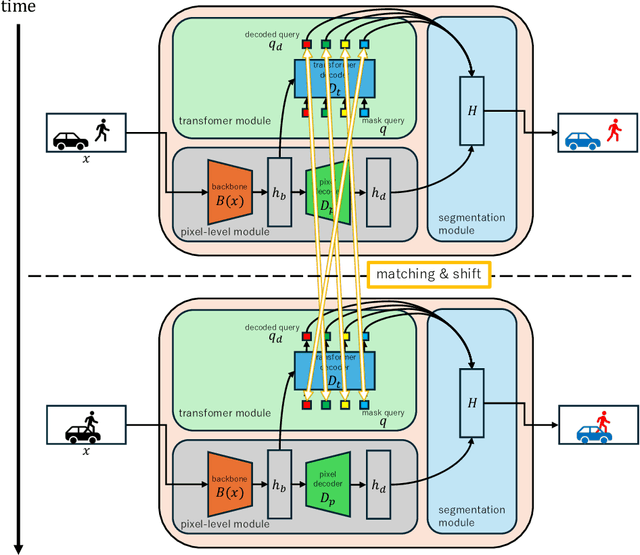
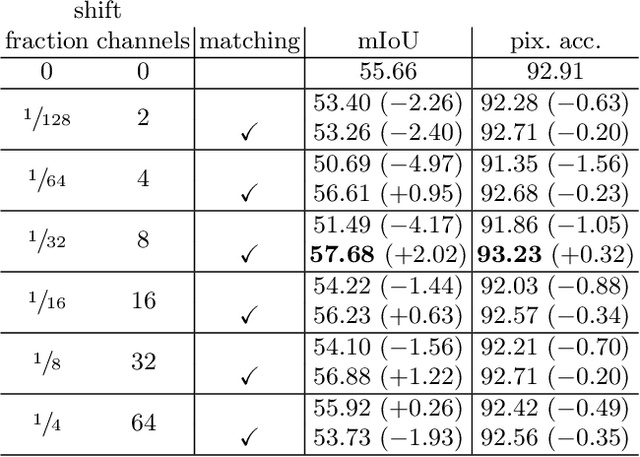
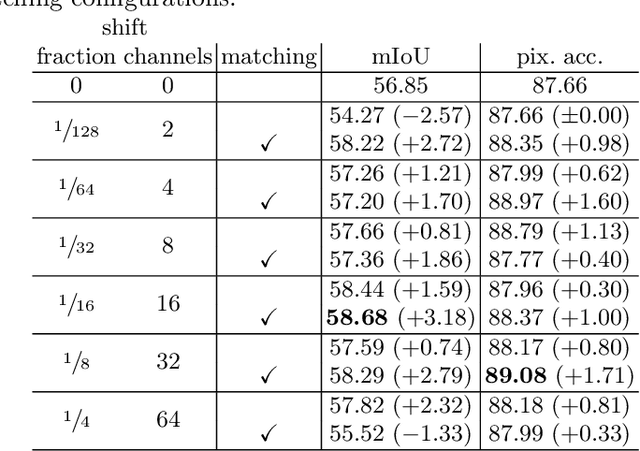
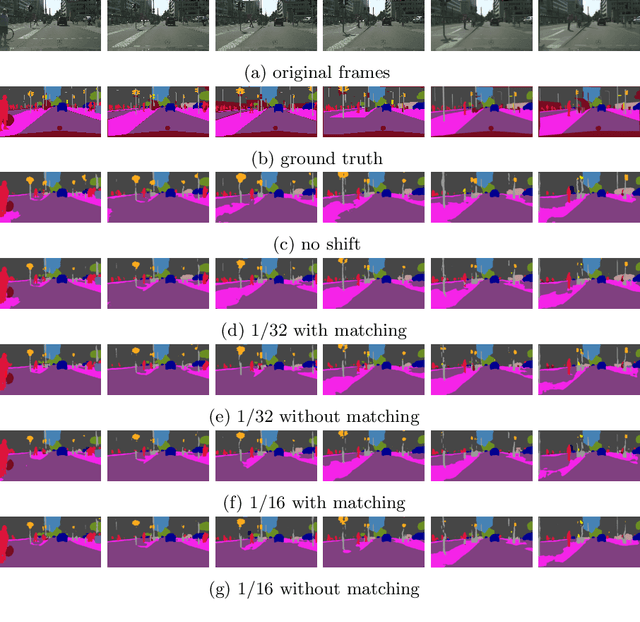
Abstract:Video segmentation is a popular task, but applying image segmentation models frame-by-frame to videos does not preserve temporal consistency. In this paper, we propose a method to extend a query-based image segmentation model to video using feature shift and query matching. The method uses a query-based architecture, where decoded queries represent segmentation masks. These queries should be matched before performing the feature shift to ensure that the shifted queries represent the same mask across different frames. Experimental results on CityScapes-VPS and VSPW show significant improvements from the baselines, highlighting the method's effectiveness in enhancing segmentation quality while efficiently reusing pre-trained weights.
Query matching for spatio-temporal action detection with query-based object detector
Sep 27, 2024



Abstract:In this paper, we propose a method that extends the query-based object detection model, DETR, to spatio-temporal action detection, which requires maintaining temporal consistency in videos. Our proposed method applies DETR to each frame and uses feature shift to incorporate temporal information. However, DETR's object queries in each frame may correspond to different objects, making a simple feature shift ineffective. To overcome this issue, we propose query matching across different frames, ensuring that queries for the same object are matched and used for the feature shift. Experimental results show that performance on the JHMDB21 dataset improves significantly when query features are shifted using the proposed query matching.
Online pre-training with long-form videos
Aug 28, 2024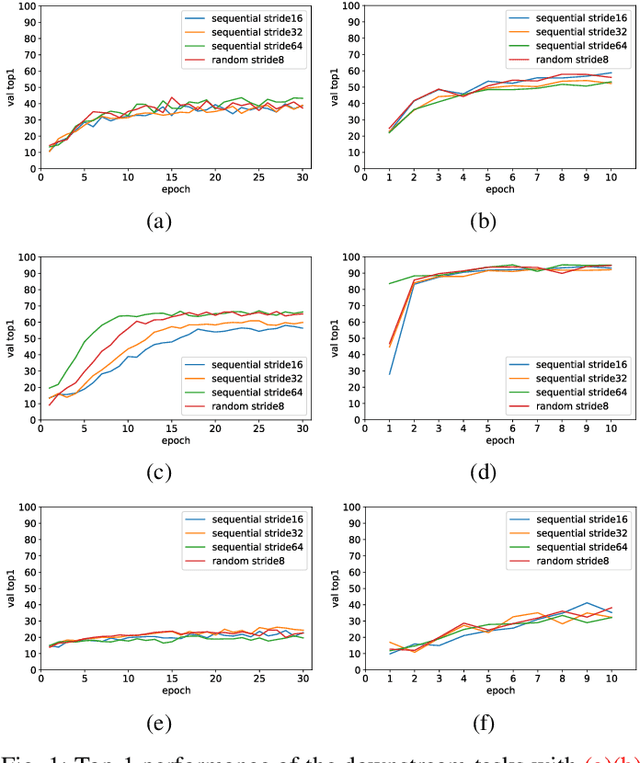
Abstract:In this study, we investigate the impact of online pre-training with continuous video clips. We will examine three methods for pre-training (masked image modeling, contrastive learning, and knowledge distillation), and assess the performance on downstream action recognition tasks. As a result, online pre-training with contrast learning showed the highest performance in downstream tasks. Our findings suggest that learning from long-form videos can be helpful for action recognition with short videos.
Fine-grained length controllable video captioning with ordinal embeddings
Aug 27, 2024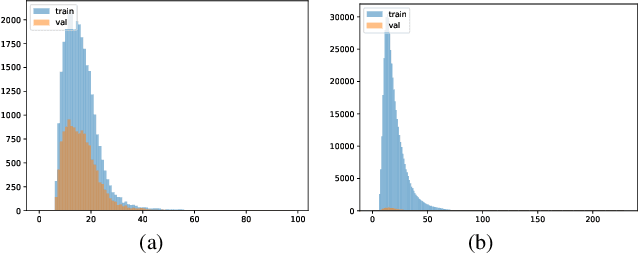


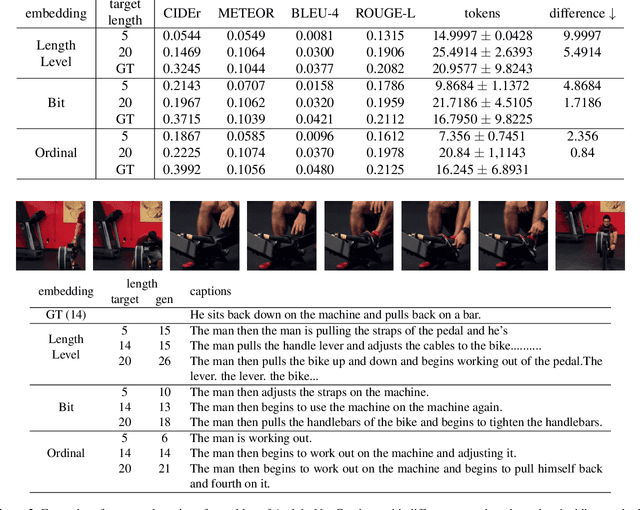
Abstract:This paper proposes a method for video captioning that controls the length of generated captions. Previous work on length control often had few levels for expressing length. In this study, we propose two methods of length embedding for fine-grained length control. A traditional embedding method is linear, using a one-hot vector and an embedding matrix. In this study, we propose methods that represent length in multi-hot vectors. One is bit embedding that expresses length in bit representation, and the other is ordinal embedding that uses the binary representation often used in ordinal regression. These length representations of multi-hot vectors are converted into length embedding by a nonlinear MLP. This method allows for not only the length control of caption sentences but also the control of the time when reading the caption. Experiments using ActivityNet Captions and Spoken Moments in Time show that the proposed method effectively controls the length of the generated captions. Analysis of the embedding vectors with ICA shows that length and semantics were learned separately, demonstrating the effectiveness of the proposed embedding methods.
Multi-model learning by sequential reading of untrimmed videos for action recognition
Jan 26, 2024Abstract:We propose a new method for learning videos by aggregating multiple models by sequentially extracting video clips from untrimmed video. The proposed method reduces the correlation between clips by feeding clips to multiple models in turn and synchronizes these models through federated learning. Experimental results show that the proposed method improves the performance compared to the no synchronization.
S3Aug: Segmentation, Sampling, and Shift for Action Recognition
Oct 23, 2023



Abstract:Action recognition is a well-established area of research in computer vision. In this paper, we propose S3Aug, a video data augmenatation for action recognition. Unlike conventional video data augmentation methods that involve cutting and pasting regions from two videos, the proposed method generates new videos from a single training video through segmentation and label-to-image transformation. Furthermore, the proposed method modifies certain categories of label images by sampling to generate a variety of videos, and shifts intermediate features to enhance the temporal coherency between frames of the generate videos. Experimental results on the UCF101, HMDB51, and Mimetics datasets demonstrate the effectiveness of the proposed method, paricularlly for out-of-context videos of the Mimetics dataset.
Joint learning of images and videos with a single Vision Transformer
Aug 21, 2023Abstract:In this study, we propose a method for jointly learning of images and videos using a single model. In general, images and videos are often trained by separate models. We propose in this paper a method that takes a batch of images as input to Vision Transformer IV-ViT, and also a set of video frames with temporal aggregation by late fusion. Experimental results on two image datasets and two action recognition datasets are presented.
Object-ABN: Learning to Generate Sharp Attention Maps for Action Recognition
Jul 27, 2022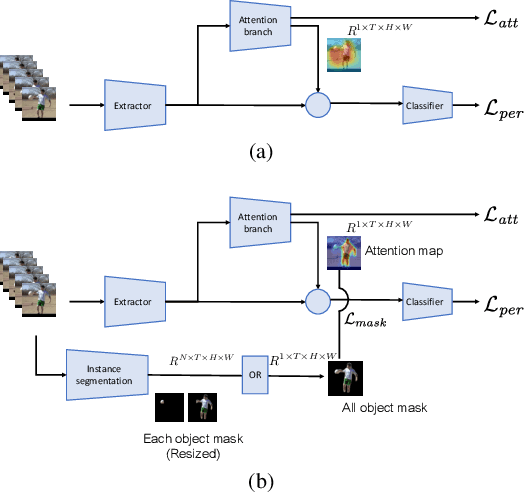
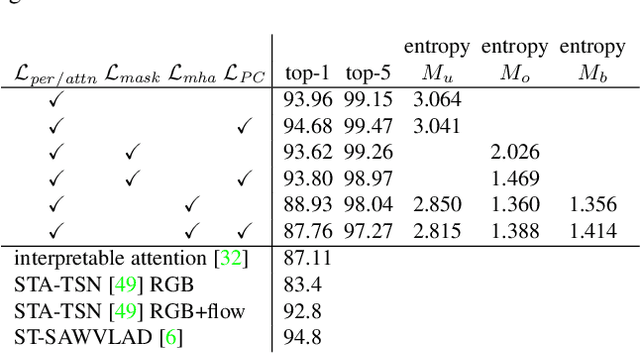
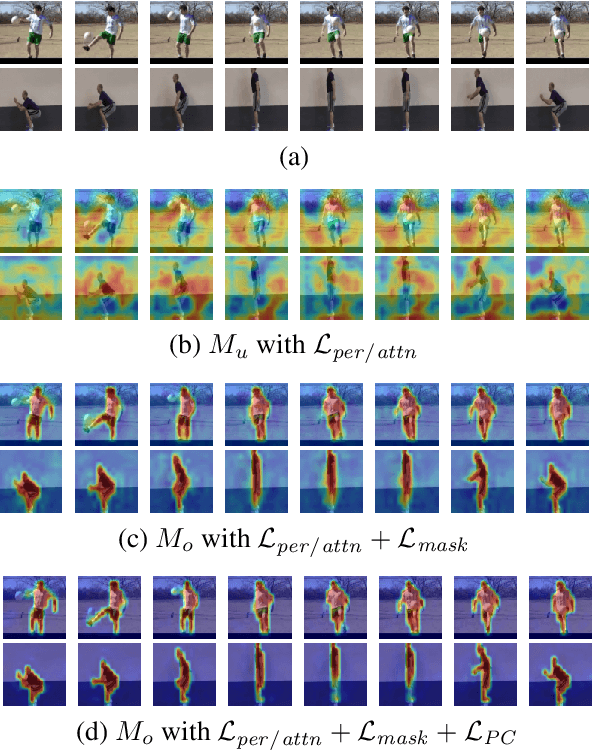

Abstract:In this paper we propose an extension of the Attention Branch Network (ABN) by using instance segmentation for generating sharper attention maps for action recognition. Methods for visual explanation such as Grad-CAM usually generate blurry maps which are not intuitive for humans to understand, particularly in recognizing actions of people in videos. Our proposed method, Object-ABN, tackles this issue by introducing a new mask loss that makes the generated attention maps close to the instance segmentation result. Further the PC loss and multiple attention maps are introduced to enhance the sharpness of the maps and improve the performance of classification. Experimental results with UCF101 and SSv2 shows that the generated maps by the proposed method are much clearer qualitatively and quantitatively than those of the original ABN.
On the Performance Evaluation of Action Recognition Models on Transcoded Low Quality Videos
Apr 19, 2022



Abstract:In the design of action recognition models, the quality of videos in the dataset is an important issue, however the trade-off between the quality and performance is often ignored. In general, action recognition models are trained and tested on high-quality videos, but in actual situations where action recognition models are deployed, sometimes it might not be assumed that the input videos are of high quality. In this study, we report qualitative evaluations of action recognition models for the quality degradation associated with transcoding by JPEG and H.264/AVC. Experimental results are shown for evaluating the performance of pre-trained models on the transcoded validation videos of Kinetics400. The models are also trained on the transcoded training videos. From these results, we quantitatively show the degree of degradation of the model performance with respect to the degradation of the video quality.
 Add to Chrome
Add to Chrome Add to Firefox
Add to Firefox Add to Edge
Add to Edge